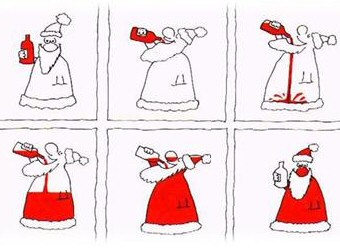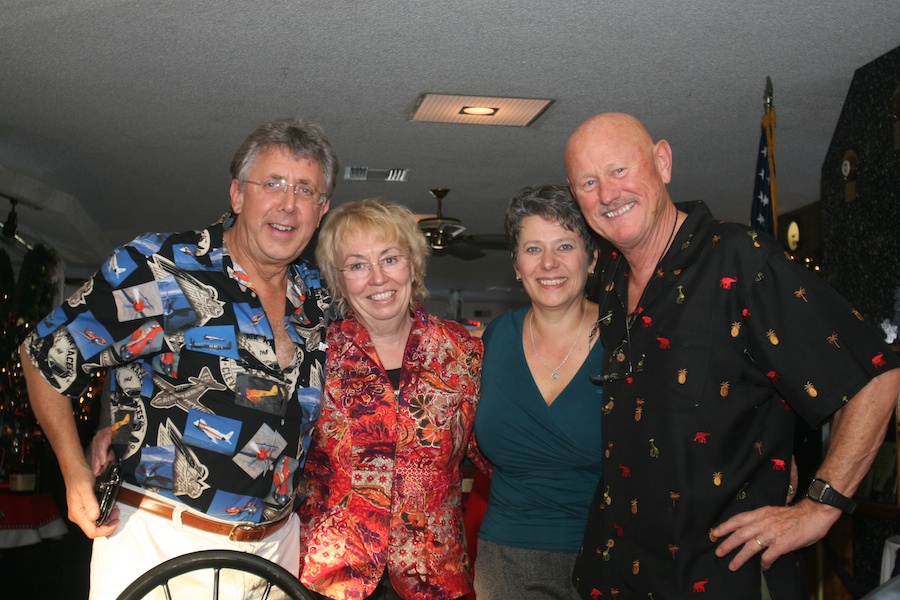First Church Then Newport Harbor Elks For Dancing

Click for full sized image (2400 x 1800 px)

The drawing for the trees was today and the normal band location has tables for the boat parade tonight

Love the decorations



Did You Know? -
Pyotr Smirnov founded his vodka distillery in Moscow in the 1860s under the trading name of PA Smirnoff, pioneering charcoal filtration in the 1870s, and becoming the first to utilize newspaper ads along with charitable contributions to the clergy to stifle anti-vodka sermons, capturing two-thirds of the Moscow market by 1886. His brand was reportedly the tsar's favorite. When Pyotr died, he was succeeded by his third son Vladimir Smirnov (? - 1939). The company flourished and produced more than 4 million cases of vodka per year.
Smirnoff Black, No. 55.
In 1904 the Tsar nationalized the Russian vodka industry and Vladimir Smirnoff was forced to sell his factory and brand. During the October Revolution of 1917, the Smirnoff family had to flee. Vladimir Smirnov re-established the factory in 1920 in Constantinople (present day Istanbul). Four years later he moved to Lwów (formerly Poland, now Lviv, Ukraine) and started to sell the vodka under the contemporary French spelling of the name, "Smirnoff". The new product was a success and by the end of 1930 it was exported to most European countries. An additional distillery was founded in Paris in 1925.
In the 1930s Vladimir met Rudolph Kunett, a Russian who had emigrated to America in 1920. The Kunett family had been a supplier of spirits to Smirnoff in Moscow before the Revolution. In 1933 Vladimir sold Kunett the right to begin producing Smirnoff vodka in North America. However, the business in America was not as successful as Kunett had hoped.
In 1938 Kunett could not afford to pay for the necessary sales licenses, and contacted John Martin, president of Heublein, who agreed to buy the rights to Smirnoff for the value of the distilling equipment.
His board thought he was mad. Sales were very slow until they changed the product to use whiskey corks instead. In Kentucky sales rocketed as the distributor started marketing Smirnoff as "white whiskey, no taste, no smell".

Canadian Club and a candy cane... Life is good



Did You Know? - Walker founded his distillery in 1858 in Detroit. He first learned how to distill cider vinegar in his grocery store in the 1830s before moving on to whisky and producing his first barrels in 1854. However, with the prohibition movement gathering momentum and Michigan already becoming "dry", Walker decided to move his distillery across the Detroit River to Windsor, Ontario. From here, he was able to export his whisky and start to develop Walkerville, a community that Walker financed and sourced most of his employees from.
Walker's whisky was particularly popular in the late 19th century gentlemen's clubs of the U.S. and Canada; hence it became known as "Club Whisky". Walker originally positioned his Club Whisky as a premium liquor, pitching it not only on its smoothness and purity but also the length of the aging process (Walker's whisky was aged in oak barrels for a minimum of five years). This was revolutionary at the time, as all of the U.S. bourbons and whiskies were aged for less than a year.

There were other types of trees also

Kristen and Hans joined the party

Brian and Jan rounded out the afternoon

We giggled all afternoon

The stories got funnier and funnier... Maybe it was the wine



When we were done our table looked like this....

Amazing how much we all think alike and laugh at the same things

Jan is all dressed for the season


The stories continue

Santa dropped by and took pictures of us!

Can you see him in the mirror???? Santa does not cast a reflection!

Ah... There is Santa in his Christmas shirt

We really liked the candy cane holder

Look close....
Did You Know? - According to a popular account, in 1672, in Cologne, Germany, the choirmaster at Cologne Cathedral, wishing to remedy the noise caused by children in his church during the Living Crèche tradition of Christmas Eve, asked a local candy maker for some sweet sticks for them.
In order to justify the practice of giving candy to children during worship services, he asked the candy maker to add a crook to the top of each stick, which would help children remember the shepherds who paid visit to infant Jesus.
In addition, he used the white colour of the converted sticks to teach children about the Christian belief in the sinless life of Jesus.
From Germany, the candy canes spread to other parts of Europe, where they were handed out during plays reenacting the Nativity.
A recipe for straight peppermint candy sticks, white with colored stripes, was published in 1844. The candy cane has been mentioned in literature since 1866, was first mentioned in association with Christmas in 1874, and as early as 1882 was hung on Christmas trees.
Chicago confectioners the Bunte Brothers filed the earliest patents for candy cane making machines in the early 1920s.

More candy cane holders

Saying goodbye



Heading for home....

Goodbye Elks
Off To Old Ranch To Continue Wine Tasting

James in his Christmas shirt
circa 2003 (We found the date)


All smiles

Linda has a magnificent Christmas sweater

Shaun and his "serious" look

Shaun and his "non-serious" look

Teri can't figure out what Shaun is up to....



Right before Paul fell asleep.... Too much wine tasting


David in his reindeer costume.... It was difficult to recognize him

"Oh boy! Paul is flashing again"

Dave and Cindy join the happiness

The Fickle Finger Of Fate


"I will drink to that.... Actually, I will drink to anything!"

"I think I may be trying my chauffeur skills tonight"

How come wine tasting does not affect them?

Here poochie poochie

Well trained dog

"Keep him away from Paul!"

CHOMP!!! The Christmas pizza slowly disappears


"Share.... Whaddya mean share"

"I guess I will drink Paul's last wine since he appears to be ASLEEP"

"You sir need a chauffeur to drive you home"

James dons his Chauffeurs hat

James brings the car around
Did You Know? - The term "chauffeur" comes from the French term for stoker because the earliest automobiles, like their railroad and sea vessel counterparts, were steam-powered and required the driver to stoke the engine. Early petrol/gasoline-powered motor cars, before the advent of electric ignition, were ignited by 'hot tubes' in the cylinder head which had to be pre-heated before the engine would start.
Hence the term 'chauffeur' which, in this context, means something like 'heater-upper'. The chauffeur would prime the hot tubes at the start of a journey, after which the natural compression cycle of the engine would keep them at the correct temperature. The chauffeur also maintained the car, including routine maintenance and cleaning, and had to be a skilled mechanic to deal with breakdowns and tire punctures en route; very common in the earliest years of the automobile.
Only the very wealthy could afford the first automobiles, and they generally employed a chauffeur rather than driving themselves. A 1906 article in the New York Times reported that "...the chauffeur problem to-day is one of the most serious that the automobilist has to deal with.", and complained that "...young men of no particular ability, who have been earning from $10 to $12 a week, are suddenly elevated to salaried positions paying from $25 to $50..."—and recommended the re-training of existing coach drivers.




